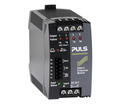
In DC circuits, two primary forms of protection are commonly used: MCBs (Miniature Circuit Breakers) and ECBs (Electronic Circuit Breakers).
Choosing the right circuit breaker requires a clear understanding of the application, careful system planning and often requires significant engineering resources.
Each time the application changes, it’s necessary to reassess whether the existing circuit breaker still provides adequate protection for the connected loads.
Learning hubMiniature circuit breakers are electrical switches that trip when excessive current is flowing, to prevent damage to electrical circuits. When an overload or short circuit is detected MCBs automatically trip to interrupt the flow of electricity.
MCBs typically use a bimetallic strip or magnetic coil to detect overcurrent conditions. This strip heats up and bends under excessive current, tripping the switch and interrupting the circuit. For short circuits, a magnetic coil generates a strong field to trip the switch, quickly cutting off current.


Electronic circuit breakers use electrical components and controllers to detect and interrupt current in a circuit. ECBs switch much faster than traditional circuit breakers and offer more precise control over current limitation, improving protection of sensitive loads.
ECBs use components to monitor the flow of current in a circuit. When the current exceeds a predetermined limit, the controller detects a fault, overload or short circuit. A MOSFET switch is then triggered interrupting the flow of current and protecting the circuit and load. The breaker can then be reset for continued operation once the fault is resolved.
See the info graphic below which compares some typical attributes of MCBs and ECBs for an easy comparison of the two devices.



When choosing DC circuit breakers your application and requirements should be carefully considered.
MCBs use a bimetallic strip or coil to trip a circuit in the event of overcurrent and short circuits. These are more suited to low voltage, less complex applications.
ECBs use electronic monitoring to trigger a switch and interrupt the flow of current, protecting the circuit and load. Ideal for constant DC flow applications and sensitive loads.
At OEM Automatic, we supply high-quality MCBs and ECBs from trusted manufacturers including Legrand and Puls. Contact our experts for help with your DC circuit application.
Our Panel team is ready to assist with expert advice, product recommendations, and proof-of-concept support.
Phone: 0116 284 9900
Email: [email protected]
Live chat: Available on our website
Onsite support: Book a visit with one of our experienced engineers for demonstrations and application advice - email [email protected] to arrange a visit.
Ready to improve your DC protection? Contact us today.




DX³